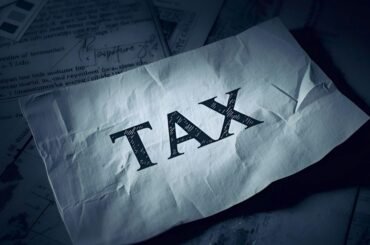Have you ever wondered if a single contract can limit your loss while letting gains run?
I write this article from my own start in India, so I walk you through opening an approved options-enabled account and using the options chain. I set clear expectations: I explain the basics, the trading steps I follow, and the screen labels my broker shows.
An option is a simple contracts-based tool that gives me the right, not the obligation, to buy or sell an underlying by an expiry. I note why that matters: my maximum loss when I am a buyer is the premium paid.
I preview the practical benefits and risks, the types of trades I use for income and protection, and the India-specific rules like market hours and approval levels. This short intro frames the step-by-step process I will use so you can follow along and place your first trade with confidence.
Why I’m Buying Options Today: Goals, Benefits, and the Plan
Today I’m using contracts to express a clear market view while keeping my downside defined. My primary objective is a focused risk-reward setup: I want exposure with a known upfront cost and a favourable chance at profit if the thesis plays out.
Buying lets me control exposure with far less capital than buying shares. That lower investment gives higher return potential when the move happens. I also value flexibility—different strategies let me adapt for trending markets, choppy conditions, or event-driven volatility.
There are trade-offs. Time decay eats value, liquidity can be thin, and commissions matter. As a buyer, my maximum loss is the premium, so I size positions conservatively and avoid over-concentration.
My plan before any trade is simple and repeatable:
- Define the thesis and the catalyst.
- Pick a strategy that fits risk tolerance and expected move.
- Set risk limits, target value, and exit triggers.
I prefer liquid markets with tight spreads because execution affects realized value. I also use this checklist to avoid impulse trades and to preserve value while hedging other holdings when needed.
Options Trading Basics I Use Before Placing a Trade
I start by naming the parts that decide an option’s value so my plan is clear and repeatable.
Calls versus puts
I define a call as my right to buy the underlying at a strike, and a put as my right to sell it. I pay a premium for either contract and that premium is my maximum loss when I am the buyer.
Strike, premium, and expiration
The strike price and the expiration date are the two levers I choose. I pick a strike where I expect the market by expiry and a time frame that matches my thesis.
Moneyness and break-even
A call is in the money when the market trades above the strike, at the money near the strike, and out of the money below it. For break-even, I add the premium to the strike for a call and subtract it for a put.
The Greeks I watch
- Delta: my quick gauge of directional exposure and probability.
- Gamma: how fast delta shifts as the market moves.
- Theta: the cost of time; decay accelerates near expiry.
- Vega: sensitivity to implied volatility; events can change value sharply.
- Rho: minor for most stocks, larger for rate-sensitive underlyings.
| Topic | Call | Put | Practical note |
|---|---|---|---|
| Right | Buy underlying | Sell underlying | I pay premium; loss limited to premium |
| Break-even | Strike + premium | Strike − premium | Use this before I enter |
| Key drivers | Underlying level, time, volatility | Underlying level, time, volatility | Watch event calendar for vega risk |
| Greek focus | Delta, theta, vega | Delta, theta, vega | Gamma warns rapid delta shifts |
How to Buy Options: My Step-by-Step Process
I follow a clear checklist that moves me from account setup to execution and exit. This makes each trade repeatable and measurable.
Open and get approved for an options trading account
I apply for an options-enabled account and disclose my objectives, experience, and financial profile. The broker assigns an approval level that matches covered calls, protective puts, or higher-risk strategies.
Choose call or put based on my market outlook
I define a bullish or bearish thesis first. A bullish view leads me toward calls; a bearish view steers me to puts. I confirm the choice before I scan prices on the chain.
Select strike price and expiration from the options chain
I read delta, implied volatility, open interest, and spreads. This helps me balance fill quality and fair price and pick a strike and expiry that match my time horizon.
Set order type, review premium, and place the trade
I prefer limit orders when liquidity is thin to control order price. I size the position against my risk budget, review the premium, and then place the order on the ticket.
Monitor, adjust, or close before expiration
I set alerts on the option price and underlying, watch Greeks and time decay, and use the platform panel to roll strikes or extend time if needed. I close trades early when spreads widen or liquidity fades.

| Step | Action I take | Why it matters |
|---|---|---|
| Account setup | Apply and get approval | Defines permitted strategies and risk limits |
| Chain selection | Pick strike & expiry | Controls exposure, time, and cost |
| Order execution | Limit or market order | Manages slippage and fill probability |
| Management | Alerts, roll, or close | Preserves value and reduces surprise losses |
Choosing the Right Strike Price and Expiration
I choose a strike by asking one simple question: what must the stock price do for me to profit by the chosen date?
Using delta, implied volatility, and time
I use delta as my starting point. Deltas around 0.30–0.50 give a balance of probability and leverage. Closer strikes raise premium and delta but need less movement.
I check implied volatility so I don’t overpay when premiums are high. Higher IV raises premiums, so I reduce size or wait if an event inflates prices.
I align expiration with the catalyst. More time lowers theta risk but costs more up front. I buy only the time I truly need.
Break-even math and examples
- I compute call break-even as strike + premium. For example, if I pay Rs. 100 for a call at Rs. 1,000 strike, the market must exceed Rs. 1,100 by expiration to profit.
- For a put, break-even is strike − premium. I ask whether the underlying asset can realistically fall below that level in my timeframe.
- I also factor liquidity and bid-ask spreads so I can exit without large slippage.
| Factor | What I check | Practical note |
|---|---|---|
| Delta | 0.30–0.50 | Balance of chance and cost |
| IV | Relative to history | Avoid buying at peaks |
| Time | Days / weeks / months | More time = higher premium, slower decay |
Risk, Capital, and Approval Levels I Consider in India
Risk matters more than opportunity when I plan any trade in Indian markets. I keep capital protection central so a single loss cannot derail progress.
I note one clear rule: when I buy an option my maximum loss equals the premium I paid. Sellers face potentially unlimited risk, so I avoid naked positions unless my approval level and capital allow it.
Practical approvals and what I can do
- I confirm my broker-assigned level and match strategies—covered calls and protective puts come first.
- I document cumulative premium at risk across open contracts to prevent stacked exposure.
- I factor trading hours (9:15–15:30 IST) when setting alerts and planning exits for liquidity.
Daily rules that protect capital
I size positions so a single premium loss is a small fraction of my account. I keep contingency capital to roll or adjust valid trades without forced exits.
I also avoid selling naked contracts because losses can escalate. If spreads widen near opens and closes, I may pause trading to reduce slippage risk.
| Topic | Buyer | Seller | Practical note |
|---|---|---|---|
| Max loss | Premium paid | Potentially unlimited | Buyers have defined risk; sellers need margin |
| Approval level | Level 1–2 (covered/protective) | Level 3–4 (spreads, naked) | Broker reviews objectives and finances |
| Liquidity timing | During 9:15–15:30 IST | Wider spreads at open/close | Choose contracts with good open interest |
| Risk controls | Premium caps, position size | Margin, stop rules | Set daily loss limits and review often |
Beginner-Friendly Strategies I Start With
My earliest trades focused on single-leg positions that kept risk visible and exits simple.
Long calls and long puts for directional views
I use a long call option when I expect a clear rise. The premium is my defined risk and my upside is open if the move occurs.
I choose a long put for bearish views rather than shorting shares. That lets me know maximum loss up front and reduces margin complexity.

Covered calls and married (protective) puts for income and hedging
- I write covered calls on stocks I already own to earn extra income, picking strikes I can accept if assigned.
- I pair a married put with a stock position when I need downside protection while keeping upside potential.
- I size small, favor liquid underlyings, and set exit rules before entry to limit risk and avoid theta surprises.
| Strategy | When I use it | Risk | Primary goal |
|---|---|---|---|
| Long call | Expect price rise | Premium paid | Leverage directional profit |
| Long put | Expect price fall | Premium paid | Defined downside hedge |
| Covered call | Hold stock, want income | Limited upside if assigned | Generate steady premium |
| Married put | Protect stock holdings | Cost of put | Cap downside, keep upside |
Tools and Workflows That Help Me Place Better Options Trades
My workflow begins with the chain so I can spot liquidity and sentiment quickly. I scan prices, open interest, bid‑ask spreads, implied volatility, and Greeks to shortlist strikes and expiries that match my thesis.
Reading the chain and building orders
I build orders directly from the chain to reduce mistakes and keep my process fast. The order ticket lets me choose market, limit, or stop and shows estimated fills and slippage before I place a trade.
Analyzers, backtesting, and visual tools
I use payoff diagrams and strategy optimizers to see max profit, max loss, and break‑even. Backtesting gives context for income setups, so I set realistic expectations even though past results aren’t a guarantee.
Alerts, exits, and daily checks
- I set alerts on the option and the underlying for key levels and IV moves.
- I predefine exit plans and automate partial exits with limit and stop orders.
- I track Greeks and daily time decay; if time or IV works against my position, I adjust size or timing.
| Tool | Purpose | Practical note |
|---|---|---|
| Chain | Scan liquidity & sentiment | Start every workflow here |
| Analyzer | Visualize P/L & probabilities | Check break‑even first |
| Alerts | Manage entries and exits | Place on both legs and underlying |
Trading Logistics for Indian Markets I Keep in Mind
I plan entries around the daily rhythm of India’s trading hours so I avoid thin liquidity. The equity derivatives market runs Monday–Friday, 9:15 am–3:30 pm IST, and I trade within that window when prices tighten and fills improve.
I always verify contract specifications before I place an order. I check lot size, tick size, and the listed expiration date for the contracts I watch. These standardized contracts affect order sizing and my strike selection.
I confirm my account permissions and that my broker supports the series I prefer. Settlement can vary by contract and date — some are cash-settled while others may require delivery of shares — so I plan exits well before expiry.
I also avoid opening positions into wide-opening auctions and closing auctions when spreads often widen. I track company events, earnings, and corporate actions on a calendar so I don’t carry unwanted exposure across an expiration.
| Logistic | What I check | Practical action |
|---|---|---|
| Market hours | 9:15–15:30 IST | Trade during peak windows |
| Contract specs | Lot, tick, expiration | Match order size to lot |
| Settlement | Cash vs physical | Close before expiry if delivery risk |
| Liquidity | Open interest & spreads | Prefer high OI strikes for entries |
Conclusion
My final note is practical: defined risk and flexible payoff let me express a view or protect holdings with clarity.
Buying an option gives me the right and a capped loss, so I use it as part of my investment playbook. Success comes when I match strike and date with my thesis and use the chain data to judge value.
I plan exits before I enter, size positions modestly, and pick liquid stocks or indices. I rely on tools, checklists, and alerts so each trade is repeatable under pressure.
For India, I respect trading hours, approval levels, and contract norms. I start simple with a single-leg long call or long put, track the result, and build skill with small, disciplined steps toward consistent profit.




